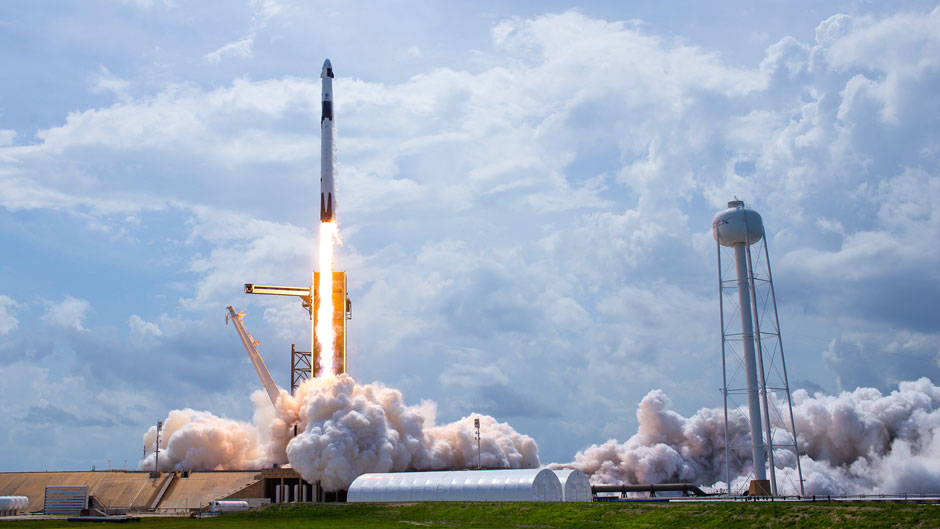Once the weather cooperated, SpaceX’s Falcon 9 rocket blasted off from the Kennedy Space Center without a hitch, soaring effortlessly into the heavens at more than twice the speed of sound.
Three days earlier, bad weather had scrubbed the mission. But on Saturday, all systems were go, and the rocket, carrying the Crew Dragon capsule with NASA astronauts Bob Behnken and Doug Hurley aboard, lifted off from the same launchpad that sent Neil Armstrong, Buzz Aldrin, and Michael Collins to the moon in 1969.
Less than a day later, Behnken and Hurley would successfully dock with the International Space Station, where they could spend up to four months conducting experiments and performing spacewalks.
It wasn’t the first time U.S. astronauts “slipped the surly bonds of earth,” to borrow a phrase from World War II Royal Canadian Air Force fighter pilot John Gillespie Magee Jr.’s famous poem High Flight.
But the launch is historic for so many other reasons. For starters, it marked the first time American astronauts blasted off from the U.S. since NASA mothballed its Space Shuttle fleet in 2011. And more importantly, it signified the first time NASA astronauts journeyed into space aboard a commercially built spacecraft and rocket—a major milestone for billionaire Elon Musk, who founded SpaceX only 18 years ago.
“Over the last few years, NASA has been providing contracts to private companies to resupply the International Space Station with cargo,” said Victoria Coverstone, professor and chair of mechanical and aerospace engineering at the University of Miami College of Engineering. “This launch is important because for the first time, a private company carried NASA astronauts into low Earth orbit to the International Space Station.”
Coverstone, a former astronaut candidate for NASA, weighs in on some of the other important aspects that make the successful launch the start of a new era in spaceflight.
This launch marks the first time since 2011 that astronauts lifted off from U.S. soil on a U.S.-manufactured rocket. Why was there such a long hiatus?
The Space Shuttle was retired because of safety and budget concerns, and NASA was left to rely on Russia to take U.S. astronauts to and from the International Space Station. During this time, NASA hired companies like SpaceX and Boeing to design, build, and test the next spaceships for human transportation in the hopes that companies would use innovation to keep costs affordable. These tasks are complicated and take time, especially when a company has to build experience.
What makes the Crew Dragon capsule itself unique?
The crewed capsule is similar in design to SpaceX’s cargo resupply vehicle. SpaceX designed the capsule to be reused several times before needing refurbishing. The launch escape system provides unique safety features that allow abort scenarios anytime from launch to orbit.
How does NASA’s Commercial Crew Program, of which the Crew Dragon Rocket is part of, complement the Artemis program to send the first woman and the next man to the moon?
NASA has selected SpaceX as an industry partner to deliver cargo to the Lunar Gateway—a space station in lunar orbit that will play a significant role in building a sustainable human lunar presence. The Lunar Gateway is central to the long-term Artemis program, serving as a staging location for cargo and items that the crew may need on the Gateway and during their expeditions to the lunar surface. NASA is partnering with industry with a goal to reduce the expense of returning to the moon. SpaceX is building on its success of delivering cargo, and now astronauts, to the International Space Station, and in the near future will extend its commercial services beyond low earth orbit by carrying Artemis cargo to the Gateway.

